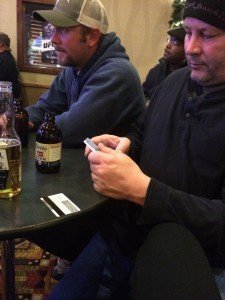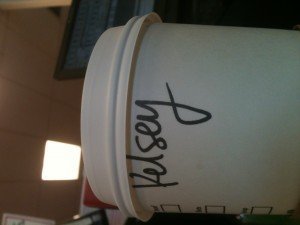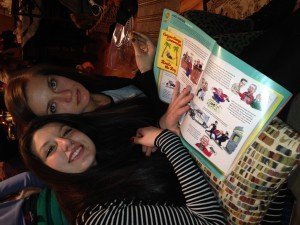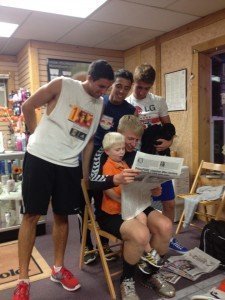“Writing Superheroes” while reading you’ll need costumes & Pizza Hut.
Imagination is one thing children have an abundance of, as we get older our imagination fades as we slip into reality. Just like all children, the kids in “Writing Superheroes have big imaginations. The children of “Writing Superheroes” imaginations take us to scenes of X-men, Power Rangers and mythical legends of Hercules. This text deals with children who write, and act out their own stories in what is called Author’s Theater. We follow the children from 2nd to 3rd grade, we see them grow within their writing practices, as well as their thought processes. This book shows how children’s literacy can give adults a better understanding of how children perceive gender roles, class roles, race, media, and the interact with one another. This book allows us insight to how media/literature plays a role in the live’s of children, how it affects their writing, and play. Within the text gender roles were placed throughout. We see how when many of the boys wrote stories only the boys filled the roles of superheroes and bad guys, and the girls filled roles of cute girl, or motherly roles. The girls soon objected to the lack of roles they were receiving, and one star of the book Tina, ends up blending gender roles. The book shows how media can affect how children see each other in roles. If the X-men depicted a boy in a certain role, most of the children would also depict a boy as that role in the their writing or play. Tina, who is the star of the book often objects the children’s view on gender, as well as race roles. In my chapter Tina writes a story of a woman superhero who saves children. She does not excluded boys from her story, and doesn’t write a typical girl story about a family. Tina shows the reader how children think outside the box. With Tina things don’t have to be set into class, gender, or race roles. The purpose of this text is to show the importance of guidance through literacy to children. This book is an awesome way for teachers to gain a better understanding of their students. This book also depicts how media, and society affects them within all aspects of education. If you are a future educator I suggest reading this book for insight, ideas, and new concepts of children. Within our pod we discussed how the children acted with one another, about the issues of gender and race that were drawn on throughout the book. We also discussed how we would all like to go to Pizza Hut, how awesome Tina is, how costumes are amazing, and that this book is a good read.

Who will sponsor my digital literacy?!
Sponsorship for digital literacies works in the same way print sponsorship does. It’s interesting to think that grandparents are sponsors for print literacies, but grandchildren are sponsors for grandparents in digital literacies. It’s a reversing of roles. I believe digital literacies are very similar to print literacies. In Keri Franklin’s article she pointed out this strategy is probably not new to a lot of people, but may be new to apply it to digital literacy. We can apply print techniques in which we are skilled, to digital ones to gain better understanding. For me, a new digital literacy that I am learning is Google drive. It is difficult because it is so new to me. I need a sponsor for google drive. Any takers?
Intro to Literacy with my Grandparents.
What kinds of writing and reading did you see as you were growing up?
Grandpa: My father stopped going to school in the fourth grade. I don't really remember seeing any reading and writing until I was in about the seventh grade. I read a Brave New World. I remember my brother always reading hot rod magazines, and that's what I always picked up and read. I wrote an essay on it in the seventh grade, and the teacher read it aloud to the class because she thought it was good. I remember feeling shocked. Grandma: My mother always was reading. She read everything from current events to whatever else she could get her hands on. My mother was a writer, and English was very dear to her. Speaking, writing, grammar was all things she pushed upon us to do correctly from a young age. She gave me Patty Reed's Doll, and a Lost World when I was 10 two books that I have kept all my life. My hand writing was also in the newspaper when I was young as an example of excellent writing.
Looking at Literacy in a New Light
The Hamilton article was a very interesting piece overall. After I read the article I scrolled through my camera roll to find out what pictures I had taken that involved literature. I tried to mentally categorize them and I discovered most of my pictures fall under the category “Interactions between people and written texts.” Hamilton states “They include images where time-bounded interaction between people and text or other literacy-related artefacts is taking place.” (28) After reading each of Hamilton’s categories and trying to place my own images I decided that even though Hamilton sets up specific rules so each image can fall directly under one category that I could argue that some of my images fall under two or three categories. In Hamilton’s conclusion she states “Looking for visual traces of literacy practice in newspaper photographs demonstrates without a doubt that literacy is part of a social practice.” (32) She goes on to say “We need a form of description that acknowledges that people can participate in literacy practices in a range of ways.” (32) I chose more than one image to show people are participating in literacy in a range of ways. The images I chose have people, text, or they are ads. They can fall under one category or two. Earlier last week we had a discussion based on “Who is a reader, what makes a reader, what do you have to read to be a reader?” We are all readers. We are constantly scrolling pictures, social media sites, and articles daily. Literacy images are culturally significant because it happens on a second to second basis in our society. Take in to account apps like Chive, Snapchat, Instagram, ect. We snap images, and add captions. Some people don’t copy notes from the board they snap a picture. All of these can fit in a category in Hamilton’s article. Literacy in images happens more in our age than it has ever before. Nowadays a picture say way more than a thousand words. 






 Website:
Website: